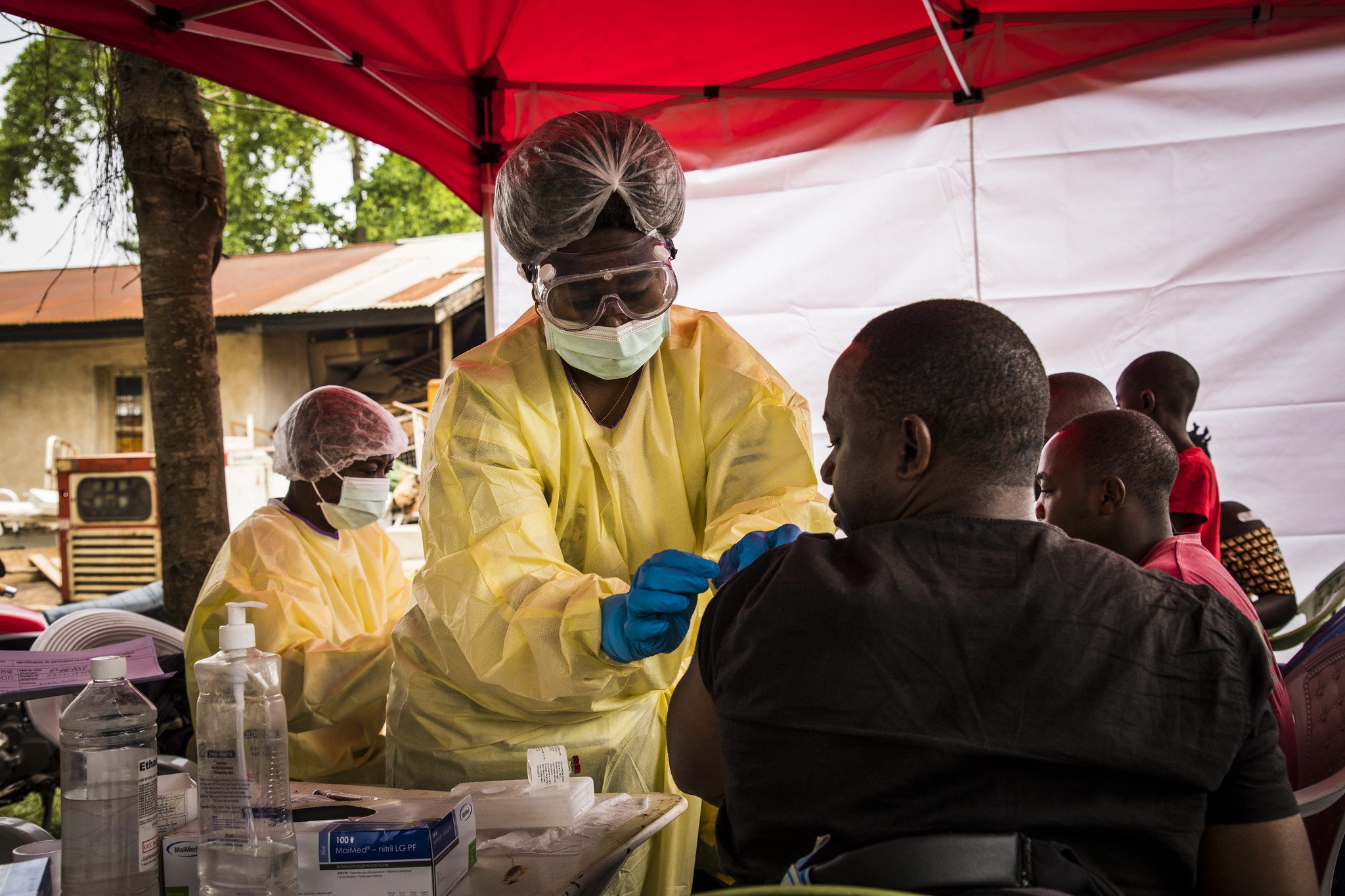DRC to introduce second vaccine in Ebola outbreak
WHO confirmed that a second investigational Ebola vaccine will be introduced in the ongoing outbreak in the Democratic Republic of the Congo, or DRC, starting in mid-October in an effort to prevent further spread of the virus.
Merck’s V920 vaccine has been used in the outbreak since last year and has been more than 97% effective, according to early estimates. The FDA recently accepted a biologics license application for the vaccine and granted it priority review status in the United States, with a decision on approval expected in March.
The second vaccine, Ad26.ZEBOV/MVA-BN, was developed by Johnson & Johnson-owned Janssen Pharmaceuticals. In contrast to the single-dose Merck vaccine, which is used as both pre- and post-exposure prophylaxis, the two-dose Janssen vaccine will be used only as pre-exposure prophylaxis, according to WHO.
“This vaccine, which is given as a two-dose course, 56 days apart, will be provided under approved protocols to target at-risk populations in areas that do not have active Ebola transmission as an additional tool to extend protection against the virus,” Mike Ryan, MD, MPH, who heads WHO’s health emergency program, told Infectious Disease News.

Around the same time that the impending introduction of the second vaccine was confirmed, Doctors Without Borders criticized WHO for “rationing” Ebola vaccines in the outbreak and “hampering efforts to make them quickly available to all who are at risk of infection.”
The organization said that 450,000 to 600,000 people should have already received the Merck vaccine, but that only 225,000 people have thus far. It said WHO “controls the supply and imposes strict limits on the number of doses deployed to the people who need it.”
WHO spokesman Tarik Jašarević said that the statement is “an extrapolation that does not reflect the social nature of Ebola transmission.”
“While the first ring of contacts may be 150 to 200 [people], where a cluster of cases occurs — for example, in a family — the contacts may be the same people. In fact, the number of people vaccinated and defined rings has increased markedly,” he said.
According to WHO, there are sufficient available doses of V920, with Merck having provided 245,000 doses for the DRC and neighboring countries and maintaining 190,000 stockpiled doses that are ready to be sent. Overall, 390,000 doses are currently available and an additional 1.3 million will be available — an amount that meets guidelines from WHO’s Strategic Advisory Group of Experts (SAGE), WHO noted in a news release.
“We partner closely with the DRC government to reach as many communities and individuals in the outbreak area as possible and are not limiting access to vaccine but rather implementing a strategy recommended by an independent advisory body of experts (SAGE) and as agreed with the government of the DRC and partners,” Ryan said.
WHO and health authorities in the DRC believe introducing the second vaccine will serve to protect at-risk populations before outbreaks hit and mitigate their overall spread, according to the release. – by Joe Gramigna
References:
MSF. WHO rationing Ebola vaccines as outbreak still not under control. https://www.doctorswithoutborders.org/what-we-do/news-stories/news/who-rationing-ebola-vaccines-outbreak-still-not-under-control. Accessed Sept. 23, 2019.
WHO. Second Ebola vaccine to complement “ring vaccination” given green light in DRC. https://www.who.int/news-room/detail/23-09-2019-second-ebola-vaccine-to-complement-ring-vaccination-given-green-light-in-drc. Accessed Sept. 23, 2019.
Disclosures: Jašarević and Ryan report no relevant financial disclosures.


